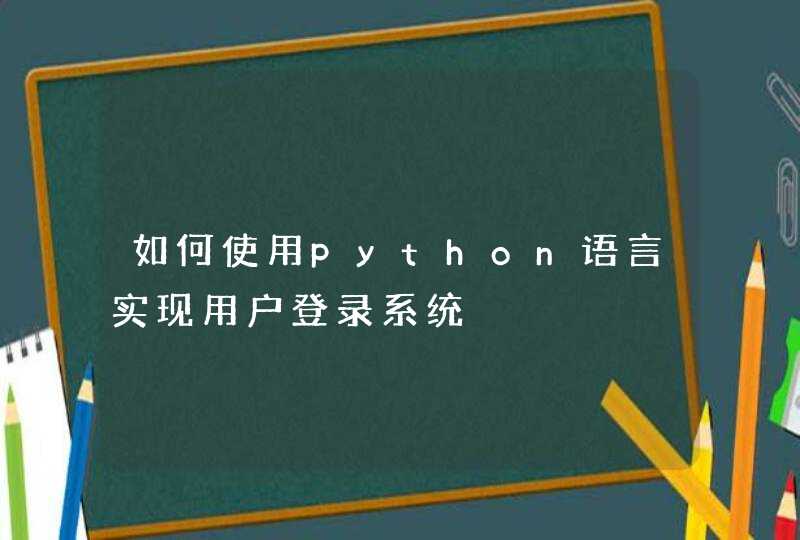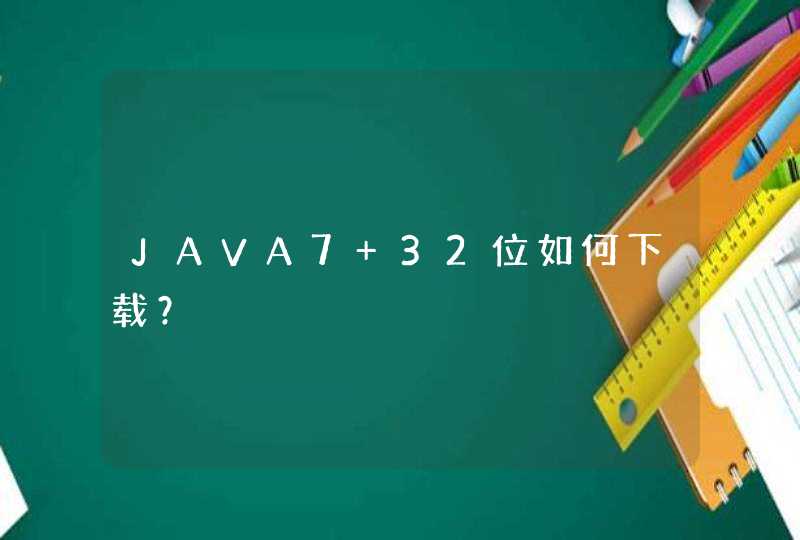
#include "stdio.h"
#include "stdlib.h"
#include "string.h"
int shoudsave=0/* */
struct student
{
char num[10]/* 学号 */
char name[20]
char sex[4]
int cgrade
int mgrade
int egrade
int totle
int ave
char neartime[10]/* 最近更新时间 */
}
typedef struct node
{
struct student data
struct node *next
}Node,*Link
void menu()
{
printf("********************************************************************************")
printf("\t1登记学生资料\t\t\t\t\t2删除学生资料\n")
printf("\t3查询学生资料\t\t\t\t\t4修改学生资料\n")
printf("\t5保存学生资料\t\t\t\t\t0退出系统\n")
printf("********************************************************************************\n")
}
void printstart()
{
printf("-----------------------------------------------------------------------\n")
}
void Wrong()
{
printf("\n=====>提示:输入错误!\n")
}
void Nofind()
{
printf("\n=====>提示:没有找到该学生!\n")
}
void printc() /* 本函数用于输出中文 */
{
printf(" 学号\t 姓名 性别 英语成绩 数学成绩 C语言成绩 总分 平均分\n")
}
void printe(Node *p)/* 本函数用于输出英文 */
{
printf("%-12s%s\t%s\t%d\t%d\t%d\t %d\t %d\n",p->data.num,p->data.name,p->data.sex,p->data.egrade,p->data.mgrade,p->data.cgrade,p->data.totle,p->data.ave)
}
Node* Locate(Link l,char findmess[],char nameornum[]) /* 该函数用于定位连表中符合要求的接点,并返回该指针 */
{
Node *r
if(strcmp(nameornum,"num")==0) /* 按学号查询 */
{
r=l->next
while(r!=NULL)
{
if(strcmp(r->data.num,findmess)==0)
return r
r=r->next
}
}
else if(strcmp(nameornum,"name")==0) /* 按姓名查询 */
{
r=l->next
while(r!=NULL)
{
if(strcmp(r->data.name,findmess)==0)
return r
r=r->next
}
}
return 0
}
void Add(Link l) /* 增加学生 */
{
Node *p,*r,*s
char num[10]
r=l
s=l->next
while(r->next!=NULL)
r=r->next/* 将指针置于最末尾 */
while(1)
{
printf("请你输入学号(以'0'返回上一级菜单:)")
scanf("%s",num)
if(strcmp(num,"0")==0)
break
while(s)
{
if(strcmp(s->data.num,num)==0)
{
printf("=====>提示:学号为'%s'的学生已经存在,若要修改请你选择'4 修改'!\n",num)
printstart()
printc()
printe(s)
printstart()
printf("\n")
return
}
s=s->next
}
p=(Node *)malloc(sizeof(Node))
strcpy(p->data.num,num)
printf("请你输入姓名:")
scanf("%s",p->data.name)
getchar()
printf("请你输入性别:")
scanf("%s",p->data.sex)
getchar()
printf("请你输入c语言成绩:")
scanf("%d",&p->data.cgrade)
getchar()
printf("请你输入数学成绩:")
scanf("%d",&p->data.mgrade)
getchar()
printf("请你输入英语成绩:")
scanf("%d",&p->data.egrade)
getchar()
p->data.totle=p->data.egrade+p->data.cgrade+p->data.mgrade
p->data.ave=p->data.totle / 3
/* 信息输入已经完成 */
p->next=NULL
r->next=p
r=p
shoudsave=1
}
}
void Qur(Link l) /* 查询学生 */
{
int sel
char findmess[20]
Node *p
if(!l->next)
{
printf("\n=====>提示:没有资料可以查询!\n")
return
}
printf("\n=====>1按学号查找\n=====>2按姓名查找\n")
scanf("%d",&sel)
if(sel==1)/* 学号 */
{
printf("请你输入要查找的学号:")
scanf("%s",findmess)
p=Locate(l,findmess,"num")
if(p)
{
printf("\t\t\t\t查找结果\n")
printstart()
printc()
printe(p)
printstart()
}
else
Nofind()
}
else if(sel==2) /* 姓名 */
{
printf("请你输入要查找的姓名:")
scanf("%s",findmess)
p=Locate(l,findmess,"name")
if(p)
{
printf("\t\t\t\t查找结果\n")
printstart()
printc()
printe(p)
printstart()
}
else
Nofind()
}
else
Wrong()
}
void Del(Link l) /* 删除 */
{
int sel
Node *p,*r
char findmess[20]
if(!l->next)
{
printf("\n=====>提示:没有资料可以删除!\n")
return
}
printf("\n=====>1按学号删除\n=====>2按姓名删除\n")
scanf("%d",&sel)
if(sel==1)
{
printf("请你输入要删除的学号:")
scanf("%s",findmess)
p=Locate(l,findmess,"num")
if(p)
{
r=l
while(r->next!=p)
r=r->next
r->next=p->next
free(p)
printf("\n=====>提示:该学生已经成功删除!\n")
shoudsave=1
}
else
Nofind()
}
else if(sel==2)
{
printf("请你输入要删除的姓名:")
scanf("%s",findmess)
p=Locate(l,findmess,"name")
if(p)
{
r=l
while(r->next!=p)
r=r->next
r->next=p->next
free(p)
printf("\n=====>提示:该学生已经成功删除!\n")
shoudsave=1
}
else
Nofind()
}
else
Wrong()
}
void Modify(Link l)
{
Node *p
char findmess[20]
if(!l->next)
{
printf("\n=====>提示:没有资料可以修改!\n")
return
}
printf("请你输入要修改的学生学号:")
scanf("%s",findmess)
p=Locate(l,findmess,"num")
if(p)
{
printf("请你输入新学号(原来是%s):",p->data.num)
scanf("%s",p->data.num)
printf("请你输入新姓名(原来是%s):",p->data.name)
scanf("%s",p->data.name)
getchar()
printf("请你输入新性别(原来是%s):",p->data.sex)
scanf("%s",p->data.sex)
printf("请你输入新的c语言成绩(原来是%d分):",p->data.cgrade)
scanf("%d",&p->data.cgrade)
getchar()
printf("请你输入新的数学成绩(原来是%d分):",p->data.mgrade)
scanf("%d",&p->data.mgrade)
getchar()
printf("请你输入新的英语成绩(原来是%d分):",p->data.egrade)
scanf("%d",&p->data.egrade)
p->data.totle=p->data.egrade+p->data.cgrade+p->data.mgrade
p->data.ave=p->data.totle/3
printf("\n=====>提示:资料修改成功!\n")
shoudsave=1
}
else
Nofind()
}
void Disp(Link l)
{
int count=0
Node *p
p=l->next
if(!p)
{
printf("\n=====>提示:没有资料可以显示!\n")
return
}
printf("\t\t\t\t显示结果\n")
printstart()
printc()
printf("\n")
while(p)
{
printe(p)
p=p->next
}
printstart()
printf("\n")
}
void Tongji(Link l)
{
Node *pm,*pe,*pc,*pt,*pa/* 用于指向分数最高的接点 */
Node *r=l->next
if(!r)
{
printf("\n=====>提示:没有资料可以统计!\n")
return
}
pm=pe=pc=pt=pa=r
while(r!=NULL)
{
if(r->data.cgrade>=pc->data.cgrade)
pc=r
if(r->data.mgrade>=pm->data.mgrade)
pm=r
if(r->data.egrade>=pe->data.egrade)
pe=r
if(r->data.totle>=pt->data.totle)
pt=r
if(r->data.ave>=pa->data.ave)
pa=r
r=r->next
}
printf("------------------------------统计结果--------------------------------\n")
printf("总分最高者:\t%s %d分\n",pt->data.name,pt->data.totle)
printf("平均分最高者:\t%s %d分\n",pa->data.name,pa->data.ave)
printf("英语最高者:\t%s %d分\n",pe->data.name,pe->data.egrade)
printf("数学最高者:\t%s %d分\n",pm->data.name,pm->data.mgrade)
printf("c语言最高者:\t%s %d分\n",pc->data.name,pc->data.cgrade)
printstart()
}
void Sort(Link l)
{
Link ll
Node *p,*rr,*s
ll=(Link)malloc(sizeof(Node))/* 用于做新的连表 */
ll->next=NULL
if(l->next==NULL)
{
printf("\n=====>提示:没有资料可以排序!\n")
return
}
p=l->next
while(p)
{
s=(Node*)malloc(sizeof(Node))/* 新建接点用于保存信息 */
s->data=p->data
s->next=NULL
rr=ll
while(rr->next!=NULL &&rr->next->data.totle>=p->data.totle)
rr=rr->next
if(rr->next==NULL)
rr->next=s
else
{
s->next=rr->next
rr->next=s
}
p=p->next
}
free(l)
l->next=ll->next
printf("\n=====>提示:排序已经完成!\n")
}
void Save(Link l)
{
FILE* fp
Node *p
int flag=1,count=0
fp=fopen("c:\\student","wb")
if(fp==NULL)
{
printf("\n=====>提示:重新打开文件时发生错误!\n")
exit(1)
}
p=l->next
while(p)
{
if(fwrite(p,sizeof(Node),1,fp)==1)
{
p=p->next
count++
}
else
{
flag=0
break
}
}
if(flag)
{
printf("\n=====>提示:文件保存成功.(有%d条记录已经保存.)\n",count)
shoudsave=0
}
fclose(fp)
}
void main()
{
Link l/* 连表 */
FILE *fp/* 文件指针 */
int sel
char ch
char jian
int count=0
Node *p,*r
printf("\t\t\t\t学生成绩管理系统\n\t\t\t\t\n")
l=(Node*)malloc(sizeof(Node))
l->next=NULL
r=l
fp=fopen("C:\\student","rb")
if(fp==NULL)
{
printf("\n=====>提示:文件还不存在,是否创建?(y/n)\n")
scanf("%c",&jian)
if(jian=='y'||jian=='Y')
fp=fopen("C:\\student","wb")
else
exit(0)
}
printf("\n=====>提示:文件已经打开,正在导入记录......\n")
while(!feof(fp))
{
p=(Node*)malloc(sizeof(Node))
if(fread(p,sizeof(Node),1,fp)) /* 将文件的内容放入接点中 */
{
p->next=NULL
r->next=p
r=p/* 将该接点挂入连中 */
count++
}
}
fclose(fp)/* 关闭文件 */
printf("\n=====>提示:记录导入完毕,共导入%d条记录.\n",count)
while(1)
{
menu()
printf("请你选择操作:")
scanf("%d",&sel)
if(sel==0)
{
if(shoudsave==1)
{ getchar()
printf("\n=====>提示:资料已经改动,是否将改动保存到文件中(y/n)?\n")
scanf("%c",&ch)
if(ch=='y'||ch=='Y')
Save(l)
}
printf("\n=====>提示:你已经退出系统,再见!\n")
break
}
switch(sel)
{
case 1:Add(l)break/* 增加学生 */
case 2:Del(l)break/* 删除学生 */
case 3:Qur(l)break/* 查询学生 */
case 4:Modify(l)break/* 修改学生 */
case 5:Save(l)break/* 保存学生 */
case 9:printf("\t\t\t==========帮助信息==========\n")break
default: Wrong()getchar()break
}
}
}
前言: 在构建ceRNA 网络时,需要计算lncRNA 与 蛋白编码gene (pc gene) 间的表达相关性,一般采用皮尔逊相关系数。具体如何做呢?
2.获得mRNA的表达矩阵
4个基因在100个样本的表达量矩阵:
3.计算lncRNA 与gene 的表达相关性
使用cor()函数进行皮尔森相关系数计算,就是这么简单:
R语言基本数据分析本文基于R语言进行基本数据统计分析,包括基本作图,线性拟合,逻辑回归,bootstrap采样和Anova方差分析的实现及应用。
不多说,直接上代码,代码中有注释。
1. 基本作图(盒图,qq图)
#basic plot
boxplot(x)
qqplot(x,y)
2. 线性拟合
#linear regression
n = 10
x1 = rnorm(n)#variable 1
x2 = rnorm(n)#variable 2
y = rnorm(n)*3
mod = lm(y~x1+x2)
model.matrix(mod) #erect the matrix of mod
plot(mod) #plot residual and fitted of the solution, Q-Q plot and cook distance
summary(mod) #get the statistic information of the model
hatvalues(mod) #very important, for abnormal sample detection
3. 逻辑回归
#logistic regression
x <- c(0, 1, 2, 3, 4, 5)
y <- c(0, 9, 21, 47, 60, 63) # the number of successes
n <- 70 #the number of trails
z <- n - y #the number of failures
b <- cbind(y, z) # column bind
fitx <- glm(b~x,family = binomial) # a particular type of generalized linear model
print(fitx)
plot(x,y,xlim=c(0,5),ylim=c(0,65)) #plot the points (x,y)
beta0 <- fitx$coef[1]
beta1 <- fitx$coef[2]
fn <- function(x) n*exp(beta0+beta1*x)/(1+exp(beta0+beta1*x))
par(new=T)
curve(fn,0,5,ylim=c(0,60)) # plot the logistic regression curve
3. Bootstrap采样
# bootstrap
# Application: 随机采样,获取最大eigenvalue占所有eigenvalue和之比,并画图显示distribution
dat = matrix(rnorm(100*5),100,5)
no.samples = 200 #sample 200 times
# theta = matrix(rep(0,no.samples*5),no.samples,5)
theta =rep(0,no.samples*5)
for (i in 1:no.samples)
{
j = sample(1:100,100,replace = TRUE)#get 100 samples each time
datrnd = dat[j,]#select one row each time
lambda = princomp(datrnd)$sdev^2#get eigenvalues
# theta[i,] = lambda
theta[i] = lambda[1]/sum(lambda)#plot the ratio of the biggest eigenvalue
}
# hist(theta[1,]) #plot the histogram of the first(biggest) eigenvalue
hist(theta)#plot the percentage distribution of the biggest eigenvalue
sd(theta)#standard deviation of theta
#上面注释掉的语句,可以全部去掉注释并将其下一条语句注释掉,完成画最大eigenvalue分布的功能
4. ANOVA方差分析
#Application:判断一个自变量是否有影响 (假设我们喂3种维他命给3头猪,想看喂维他命有没有用)
#
y = rnorm(9)#weight gain by pig(Yij, i is the treatment, j is the pig_id), 一般由用户自行输入
#y = matrix(c(1,10,1,2,10,2,1,9,1),9,1)
Treatment <- factor(c(1,2,3,1,2,3,1,2,3)) #each {1,2,3} is a group
mod = lm(y~Treatment) #linear regression
print(anova(mod))
#解释:Df(degree of freedom)
#Sum Sq: deviance (within groups, and residuals) 总偏差和
# Mean Sq: variance (within groups, and residuals) 平均方差和
# compare the contribution given by Treatment and Residual
#F value: Mean Sq(Treatment)/Mean Sq(Residuals)
#Pr(>F): p-value. 根据p-value决定是否接受Hypothesis H0:多个样本总体均数相等(检验水准为0.05)
qqnorm(mod$residual) #plot the residual approximated by mod
#如果qqnorm of residual像一条直线,说明residual符合正态分布,也就是说Treatment带来的contribution很小,也就是说Treatment无法带来收益(多喂维他命少喂维他命没区别)
如下面两图分别是
(左)用 y = matrix(c(1,10,1,2,10,2,1,9,1),9,1)和
(右)y = rnorm(9)
的结果。可见如果给定猪吃维他命2后体重特别突出的数据结果后,qq图种residual不在是一条直线,换句话说residual不再符合正态分布,i.e., 维他命对猪的体重有影响。



































![R和Rstudio终端显示语言的更改[Windows]](/aiimages/R%E5%92%8CRstudio%E7%BB%88%E7%AB%AF%E6%98%BE%E7%A4%BA%E8%AF%AD%E8%A8%80%E7%9A%84%E6%9B%B4%E6%94%B9%5BWindows%5D.png)



![python中a[1][2]是什么意思](/aiimages/python%E4%B8%ADa%5B1%5D%5B2%5D%E6%98%AF%E4%BB%80%E4%B9%88%E6%84%8F%E6%80%9D.png)




























